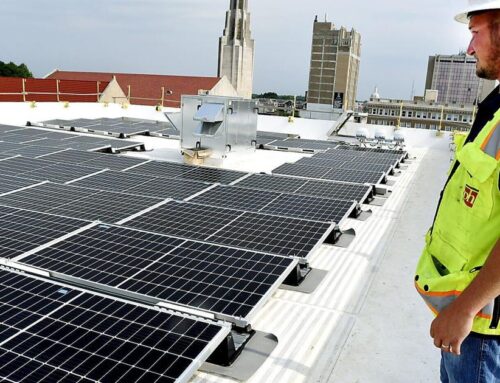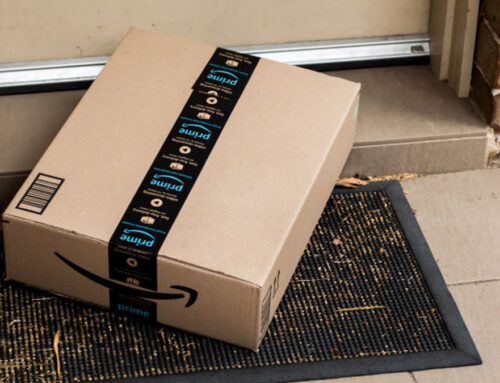For Open Space, the report mostly recommends encouraging homeowners and businesses to plant trees, including helping them with information and resources. It also calls for the city to prioritize tree planting in parts of Evanston that currently don’t have much greenery, which increases heat, and to support community groups that can care for and and maintain natural areas.
Of all these categories, Streets & Transportation is where the city has the least control. The study calls for “bolster[ing] the public transit network,” and the city has few levers to pull when it comes to transit operations. But it can “explore first-mile/last mile transportation solutions,” which can be done with bike-sharing and scooter-sharing,
The study recommends that Evanston “improve existing transit stops to make them more accessible, safe, inviting, and comfortable.” Local L stations are owned by the CTA, while all Metra stations in Evanston are owned by the Union Pacific Railroad is already planning make the Davis Street station
The report also offers several strategies to reduce truck pollution and the presence of trucks on residential streets. It recommends investing in “a low-stress, connected network of cycling and walking facilities across the community for all ages and abilities,” and piloting “green alleys,” which have permeable pavement and other features that reduce the amount of stormwater flowing into sewers.
Weidl added that flooding was a major concern that MKSK heard from residents.
As for Housing & Development, the study most notably recommends “explor[ing] licenses for rental housing instead of the current registration requirements to improve landlord accountability and property maintenance.” It also proposes incentivizing the development of affordable housing, and encourages “inclusionary” zoning that would make it easier for different types of residential buildings to be built in the same area as a way to “mitigate housing cost burdens and gentrification.” On the smaller scale, it calls for incentives to improve air quality and reduce pollution and waste from buildings.
And for Community Services, the study recommendations break into two de facto sub-categories — strategies for getting kids and adults interested and involved in local government, and strategies to reduce flooding and other pollution. Notably, this category involves increasing the distribution of rain barrels in focus areas and “align[ing] environmental sustainability efforts with local workforce development to encourage people to enter ‘green’ careers.”
Weidl said they also looked at how to better manage waste.
“There are areas of this city that seem very, very clean, and there are areas of city where there’s trash all the time, and we tried to dig into that,” she said. “Some of that comes down to trash pickup times. Some of that comes down to not having an adequate-sized dumpster in your alley.”
Another thing MKSK wants to tackle on the community side, Weidl said, is how to make sure city departments, BCCs
“There’s a lot of work being done,” she said, “but are we all coordinating?”
Board feedback The study has some gaps. While several recommendations deal with the Parks and Recreation Department Ridgeville Park District
Map of Evanston area park districts. Credit: Cook County Clerk’s Office
At the end of her presentation, Weidl praised the city for ordering the study in the first place and everyone who gave their input.
“I really applaud this community for stepping up,” she said. “There are not a lot of communities that are doing this work. I was only able to find around seven other communities nationwide.”
Environment Board Co-Chair Paula Scholl, who attended several workshops for the study, said MKSK “did a fantastic job,” though she asked about next steps, and who would be in charge of following through on the recommendations. Cara Pratt, the city’s sustainability and resilience manager, responded that she wasn’t sure.
“When we [present] it to the City Council, I think it would be a good conversation to have,” Pratt said.
Board member Jim Cahan, who spent much of this year raising concerns at meetings about how the city is implementing its Climate Action and Resilience Plan
Pratt responded that it will be Environmental Justice Evanston
“I think that’s a question that still needs to be answered,” Pratt said.
Weidl noted that, under the terms of the city’s request for proposals, her firm’s responsibilities end once the city approves the plan.
Board member Olin Wilson-Thomas also asked about how many community groups MKSK engaged with in the process. While they “didn’t want to block anyone out,” Weidl said getting all groups on board was tricky, given the logistics involved in outreach and scheduling meetings at times and places that would work for everyone.
“It’s so hard, because there are so many people in this space, and it’s hard to reach every single group and every single person,” she said.
Board member Libby Shafer wondered how the study would encourage the planting of native plants. Weidl said she wasn’t sure, but that she “was going to look into it.”
Related Stories




